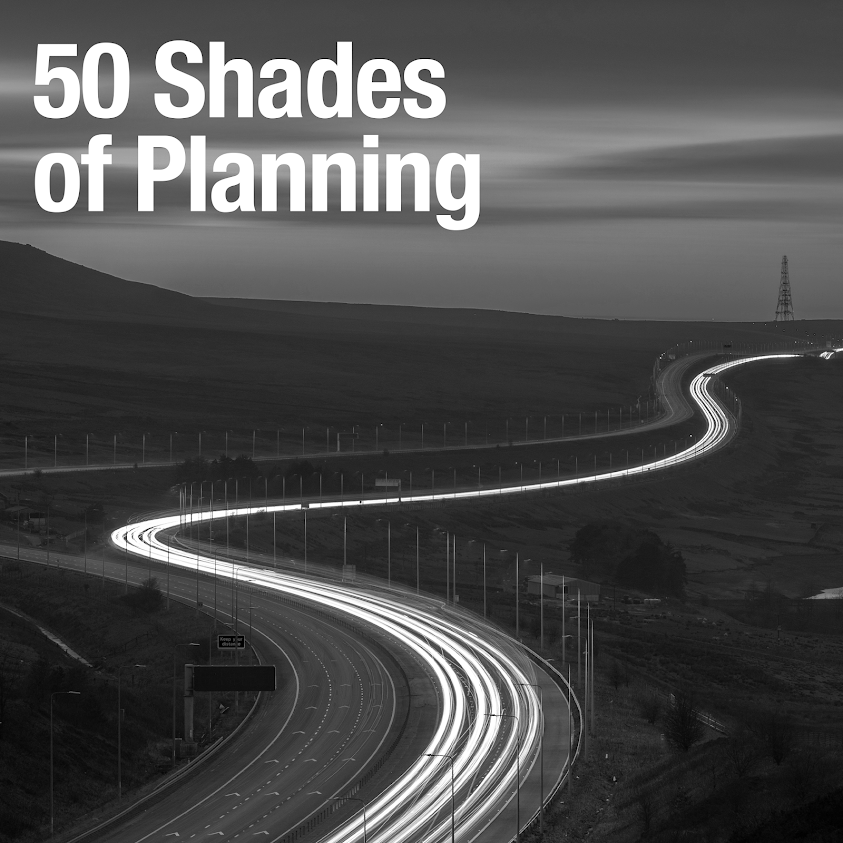As one storm abates another
continues to brew. The perfect storm that is the Cheshire East Local Plan will
develop further this week as a Portfolio Meeting is set to review a final Draft
Pre-Submission Local Plan document and approve a 6 week consultation that
would start on 5 November.
In most circumstances progress
by a LPA towards the adoption of a development plan would be heralded as a positive
step, but circumstances at Cheshire East are, whilst not far from typical,
certainly unique and the review of the final Draft Pre-Submission Local Plan
will come only two weeks after the
Secretary of State revealed in that he is “not persuaded that the updated SHLAA
provides a robust assessment of 5 year land supply."
The Cheshire East storm has
been brewing for some time, but the clouds really began to darken when a SHLAA
update was produced in February in advance of the expiration of the NPPF
transitional arrangements. It is fair to say that eyebrows were raised when land
supply across the Borough was increased overnight to 7.15 years, and the
significance of the recent appeal decisions are that they were the first to test the
robustness of this figure.
Paragraph 49 of the NPPF
states that “housing applications should be considered in the context of the
presumption in favour of sustainable development” and that “relevant policies
for the supply of housing should not be considered up-to-date if the LPA cannot demonstrate a five-year supply of deliverable housing
sites.”
Under the transitional
arrangements set out when the NPPF was published in March 2012, LPAs with local
plans adopted since 2004 were able to give "full
weight" to relevant policies "even if there is a limited degree of
conflict" for twelve months. Having accepted during appeal inquiries like
that at Loachbrook Farm, Congleton that supply was only 3.94 years, one can
imagine senior figures at the Council being keen to put a 5 year supply in
place so that applications could be refused by continuing to attach some weight
to the old Local Plan policies.
- There is a housing requirement, including backlog and buffer of some 9000 dwellings over 5 years or 1800 per annum;
- There is currently a demonstrable supply, taking a generous approach to Council estimates, which is likely to be in the region of 7000 to 7500 dwellings at most; and
- The demonstrable supply therefore equates to a figure in the region of 3.9 to 4.1 years.
This
has long term implications in that the SHLAA is critical to the demonstration of a
sound development plan, but short term implications too in that all of the old
housing policies, both policies promoting and restricting
development, are out of date and that all applications have to be assessed
against the NPPF, which includes the need to boost housing supply.
So what next? A swift review
of the implications of the recent decisions? Acceptance of fundamental flaws in
the calculation and provision of a five year housing supply?
Well the report being presented to the Portfolio
Meeting suggests that, like a holidaymaker at a British seaside resort, the
Council is hammering in it’s windbreak as the clouds roll in. It does not accept the Secretary of State’s conclusions that
historic undersupply should be addressed in the short term and that a 20%
buffer should be applied. It also states that 9,771 dwellings that are expected
to be deliverable within the first 5-year period of the plan, contradicting too
the Secretary of State’s view that too large a proportion of
identified supply is on strategic sites that are unlikely to come forward as
quickly as the Council contends.
The Portfolio Meeting report also considers whether the current ‘Green Gap’ around Crewe is "sufficient to stem the slow erosion of openness between the town and Nantwich". As a result, the report states that the Pre-Submission Core Strategy will include an extension to the North Staffordshire Green Belt to include the area between the two.
However, the reports being presented to the Strategic Planning Board next Wednesday (6 November) state that "unless or until these (appeal) decisions are challenged or a new SHLAA prepared, the Council is unable to conclusively demonstrate a five year supply of deliverable housing land". This is an accompanied by an acknowledgement that current policies NE.2 (Open Countryside) and NE.4 (Green Gap) are out of date, which is used as justification to recommend approval for new homes at Willaston in the same area that the Pre-Submission Core Strategy is to identify as new Green Belt . Has the holidaymaker recognised the need to retreat to a beachside café to make alternative plans?
In these circumstances, and given the inconsistency between these two positions, does then consultation on a final Draft Pre-Submission Local Plan represent progress towards the adoption of a development plan? Whilst it could and will no doubt be portrayed as such by senior figures at the Council, the current version of the SHLAA, part of the foundation for a sound development plan, has been acknowledged not to be robust enough for use for development control purposes and a revised SHLAA, and one would imagine a fundamentally different approach to short and long term housing supply, is to be prepared.
In order to address effectively the issues raised by the Secretary of
State the final Draft Pre-Submission Local Plan should differ considerably
from the Submission Local Plan and so consultation on a final Draft Pre-Submission Local Plan document might ultimately been seen as a step backwards rather than a step forwards.

Comments
Post a Comment